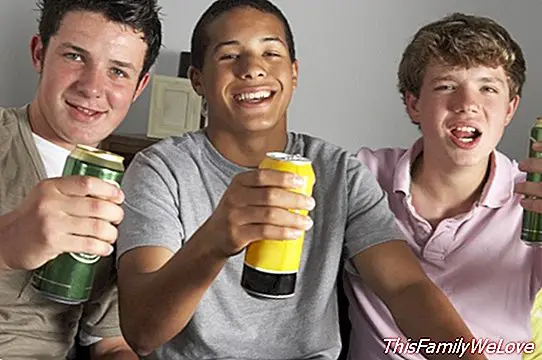Mobilization Alcohol and Minors, the decalogue to fight against this addiction

Today's society faces numerous challenges. Battles that must be won to ensure the proper development of the new generations. An example is the fight that is maintained day after day against the consumption of alcohol in young people, a problem that concerns all members of the population and deserves the attention of all to make understand the risks of the intake of these drinks.
Given the persistence of this problem in society, the Foundation for Help Against Drug Addiction, FAD, has launched the Mobilization Alcohol and Minors. A decalogue to fight against this addiction in many young people that in the first place tries to make parents understand what their children are really facing, and on the other to provide effective tools with which to avoid this problem.
Decalogue against alcohol
Despite all the campaigns launched against the consumption of alcohol, this remains. Why? From FAD, a decalogue with which to understand this situation and through which to try to fight against this danger from a new and more effective perspective:
1. Alcohol, problematic and complex cultural phenomenon. The consumption of alcohol, which has an undoubted presence in our culture, intimately integrates the way of relating and interacting, building a common space. This problem is the most common and serious of those caused by the use of psychoactive products and can not be minimized, and less denied, based on that cultural presence.
2. Especially problematic in adolescents. A very common problem of this cohabitation with alcohol is the adolescent's consumption, due to the seriousness that the alcoholic intoxication supposes for his developing organisms and for the difficulty to handle risks that occurs in that evolutionary stage. A serious influence for the future, individual and social, of a person can have the consolidation of habits that will affect all their future and vital project.
3. Problem of which we are all participants. This situation must be faced by all members of society. The adolescent population does not work on the margin of the rest. Its dysfunctions and imbalances, potentialities and difficulties, for the good and for the bad, correlate with those of society as a whole and have to be approached from that perspective. Adolescents can not be treated as segregated.
4. Problematic behavior with meanings that we must understand. To respond to this problem, we must understand how an adolescent works, what logic applies to his behavior, irrational as they seem in a first approximation. This does not imply passivity or tolerance, but a condition for preventive, educational and proximity intervention.
5. Conduct integrated into society. The unadjusted behaviors of the adolescent population are not related to personal pathologies, much less to the collective; they are not just the product of the emotional readjustments of that phase of life. In a more complex way, they correlate with the habits of the adult population, with the dominant social values, with the identity images they see in the media, with the ideological and emotional dimension of the social context, with the space and the role that the adult society grants these young people.
6. Legal and control measures necessary, but insufficient. In the attempt to anticipate the problems, regulatory and control measures are necessary but they prove insufficient. They are necessary because a complex society requires preventive norms that contribute to the protection of the common good and of the most vulnerable groups; and because, in addition, they have an educational and exemplary dimension.
7. Necessary multidimensional intervention. This problem must be addressed in its entirety. There is no denying the needs for communication and interaction, the search for a space for the adolescent population, but adults must be concerned about the values that are transmitted, taught and exemplified.
8. Responsibility of the whole society, without stigmatizing the minor. We must appeal to compliance with the rules and maintain a protective surveillance that public administrations must execute. For their part, families must teach autonomy and responsibility, freedom and commitment. The media should not cultivate ambiguity and avoid showing festive alcoholic excess
It is important not to criminalize the group of minors who consume, as well as their families. Only from a shared responsibility will be adequately addressed the consumption of alcohol by minors.
9. Need to have the diversity of situations in the adolescent population. It is important that the intervention on the problem of alcohol consumption take into account the diversity of situations. It is necessary to act counting on the variety of contexts in which the smaller population develops.
10. Commitment of the entities that are mobilized. All the entities that commit themselves in this fight must reveal the complexity of the reasons to be able to better approach the risks; help families to better fulfill their task with their sons and daughters; improve the educational resources of the teaching staff; support the development of a society and a freer, more committed and solidary citizenry; contribute to the mobilization of wills in a common project; involving the minor population as an active subject of our actions.
Damián Montero




